
The Vietnam War was a bloody conflict from 1955 to 1975. It pitted the North against the South of Vietnam or in general, between communism and anti-communism. This war left an indelible mark on whom has been through, both physically and emotionally.
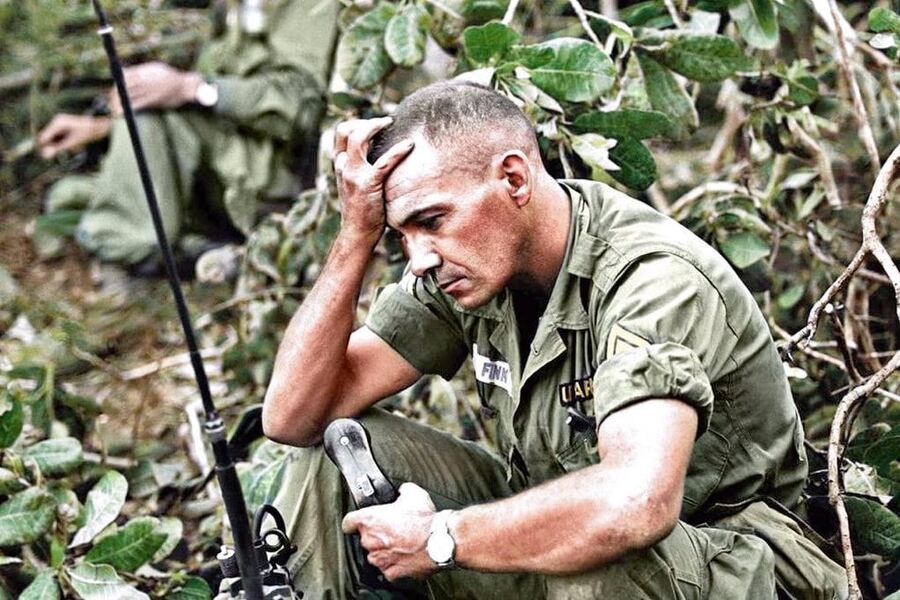
The tension of an American soldier in the battle of Dong Xoai. Photo: Steve Stibbens
Despite the immense challenges, Vietnam has shown remarkable determination in rebuilding and moving forward. The remnants and relics of the war are poignant reminders of the country's turbulent past. These places offer a sobering yet essential glimpse into one of the most significant conflicts of the 20th century. If you want to understand more about the Vietnam War, or more especially, a veteran, read the article as Asia King Travel will guide you to the most famous war historical sites in Vietnam.
The war's origins can be traced back to the First Indochina War when Vietnam sought independence from French colonial rule. After the French were defeated, the country was temporarily divided into North and South to wait for national elections. Yet, these elections never took place, and the divide solidified into a bitter ideological conflict between the communist North and the anti-communist South.

People crossed the Hien Luong Bridge before the division in 1956. Photo: Vietnam National History Museum
Over two decades, the Vietnam War ruined the country, leaving behind a trail of destruction. Countless villages, towns, and cities were reduced to rubble. Vietnamese lands were defoliated by Agent Orange and other herbicides by the U.S. military. The unfortunates exposed to the toxic chemicals have left terrible pain for the next generations.
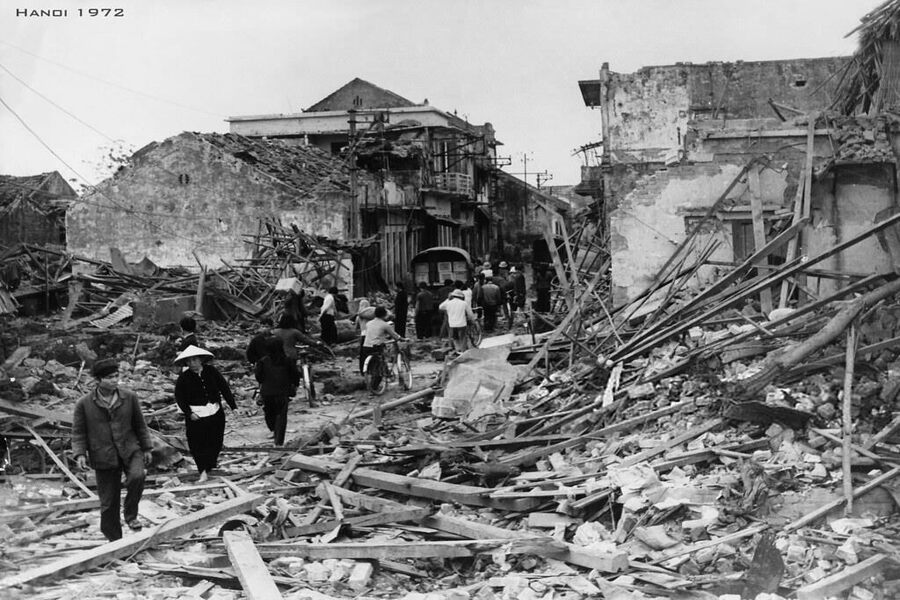
Kham Thien Street, Hanoi was devastated during the 12-day bombing campaign in 1972. Photo: Sovfoto/Universal Images Group
The prolonged war finally ended in 1975. Two years earlier, the US had agreed to withdraw from Vietnam. The war's aftermath caused a staggering number of casualties. Hundreds of thousands of lives were lost, and many more were left physically and psychologically scarred by the conflict. Vietnam was left in ruins, its infrastructure and economy shattered.
Ho Cho Minh City, formerly known as Saigon was the former capital of South Vietnam. Independence Palace was once the workplace of the President and the Southern government. It's where the fateful decision to surrender was made in 1975 to end the Vietnam War. Independence Palace is located on Nam Ky Khoi Nghia Street, District 1.

Outside Independence Palace. Photo: Ideabank
The palace remains the architecture, furnishings, and equipment of the late 1960s. At that time, it was the most valuable construction in South Vietnam. Over 100 rooms are decorated in different styles depending on their purpose.

The interior of the Conference Hall after renovated. Photo: Freepik
Inside, there is an exhibition area displaying historical photos and artifacts. With the guidance of a tour guide, visitors can learn valuable knowledge that is difficult to find elsewhere. The square outside the Palace is also a large area with a green lawn where you can soothe your mind after immersing in history.
War Remnants Museum doesn't pull any punches when showcasing the grim realities of the Vietnam War. Located at Vo Van Tan Street, District 3, it's the best stop to understand the conflict from the Vietnamese perspective.
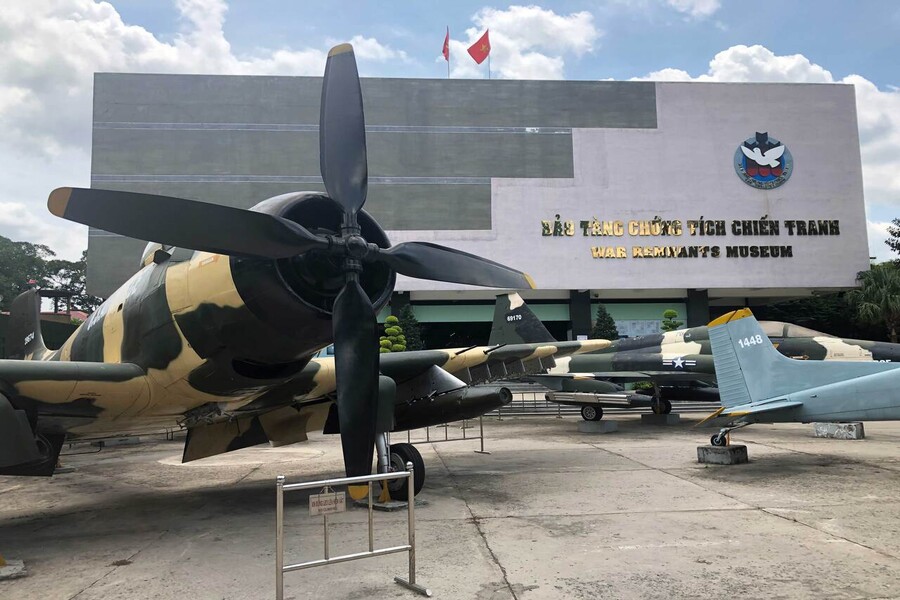
American jets are placed outside the museum. Photo: BDATrip
The outdoor area places American tanks, jets, and artillery pieces. The museum has also built a miniature prison to recreate scenes of torture, from the guillotine to a chilling "tiger cage" prison cell. Many people find it difficult to control their emotions when faced with images that seem to belong only in hell.
Each floor explores a different aspect of war. The museum doesn't shy away from highlighting crimes committed by American forces—graphic exhibits displaying gut-wrenching imagery of casualties, including those affected by Agent Orange.
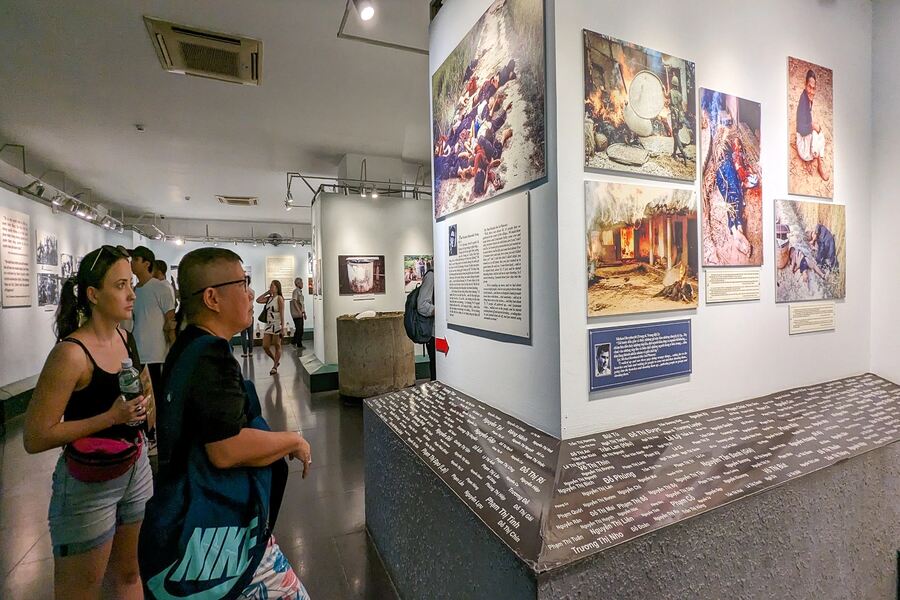
The museum's modern and dynamic presentation has attracted many tourists. Photo: aFamily
But it's not all doom and gloom. You'll also find thought-provoking displays on the anti-war movement and the support for Vietnam from international friends. In summary, it's a visceral experience that will likely leave you tormented by the harsh realities of war.
Scratching the war's surface, you can't miss the famous Cu Chi Tunnels. This network of underground tunnels lies around 70 kilometers northwest of Ho Chi Minh City. During the Vietnam War, the Viet Cong dug these tunnels as hiding spots and supply routes right under the South’s territory.
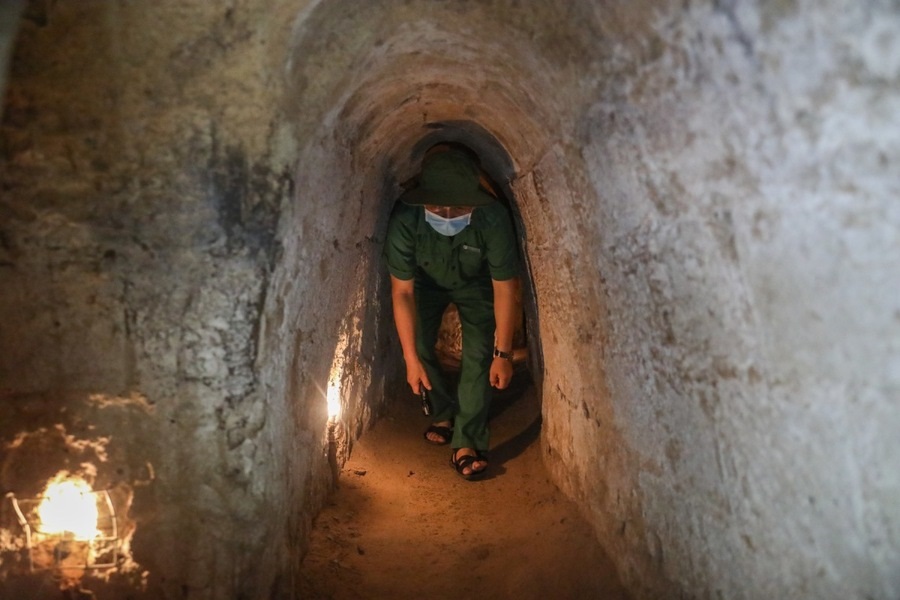
The width of the tunnel was only wide enough for a Vietnamese person, so American soldiers faced many difficulties when entered. Photo: VnExpress
At peak, this marvel maze stretched nearly 200 kilometers. Multiple trap doors, living areas, storage facilities, weapon factories, field hospitals, and kitchens - all underground. Vietnamese soldiers were able to survive the relentless bombings by moving supplies through these tunnels.
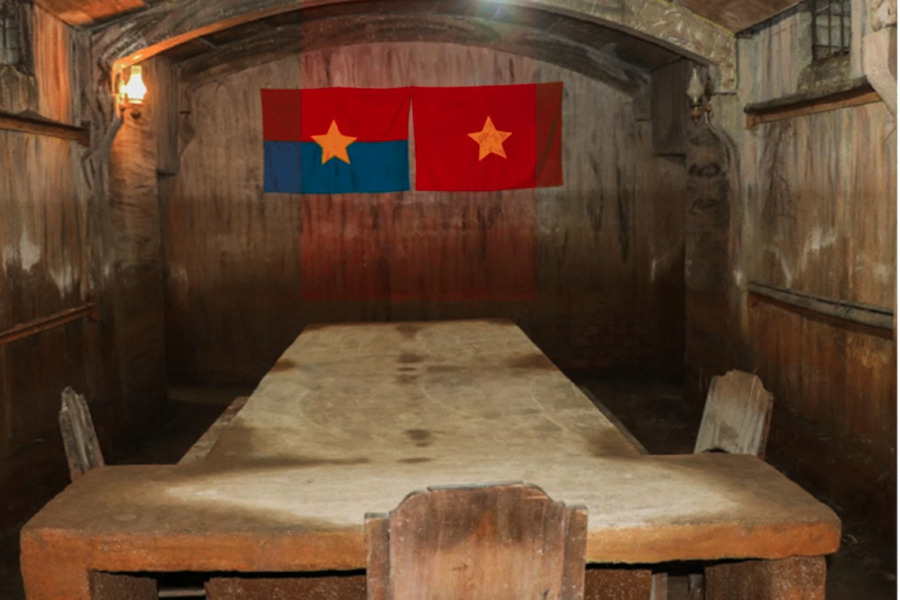
A meeting room inside the tunnel. Photo: Travelteam
A visit to the Cu Chi Tunnels is a wild reality check on the harsh conditions the Vietnamese fighters endured. You can crawl through the cramped tunnels, check out the cleverly camouflaged hatches, and see booby traps used against American soldiers. It's both eerie and fascinating to experience this underground city first-hand.
Suggested for you: Vietnam Veteran Tour 11 days: Vietnam War Experience
Leaving Ho Chi Minh City and heading to Quang Tri Province, the most intense battlefield of the war. Ben Hai River and Hien Luong Bridge stand as a reminder of the country's division. Though just a bridge apart, it took two decades for the people on either side to be reunited.

The southern part of Hien Luong Bridge is painted blue, while yellow is on the north. Photo: VOV
After the Geneva Accords were signed in 1954, Vietnam was temporarily divided into two parts. The 17th parallel (Ben Hai River) was chosen as the boundary to wait for the general election scheduled for 1956 to unify the country. However, the South Vietnamese president refused to participate in the election, setting the stage for the Vietnam War.
The two sides of the Hien Luong Bridge were painted blue-yellow, with a white line down the middle symbolizing the division. Surrounding the bridge is a complex of historical sites, including police stations, a stilt house, and propaganda loudspeakers. Additionally, there is a statue of "Aspiration for Reunification" on the southern bank.

Unlike us today, many people had to sacrifice a lot to cross this bridge. Photo: Tu Nam Nguyen
During the tour, you can admire the large Vietnamese flag flying on the flagpole, and a map of the country made of stone below it. With the guide's commentary, you will also hear about interesting "battles" in this DMZ.
Only 15 kilometers from Hien Luong Bridge and also lies next to Ben Hai River, Truong Son National Cemetery is the final resting place for over 10,000 brave soldiers who sacrificed their lives on the Ho Chi Minh Trail.
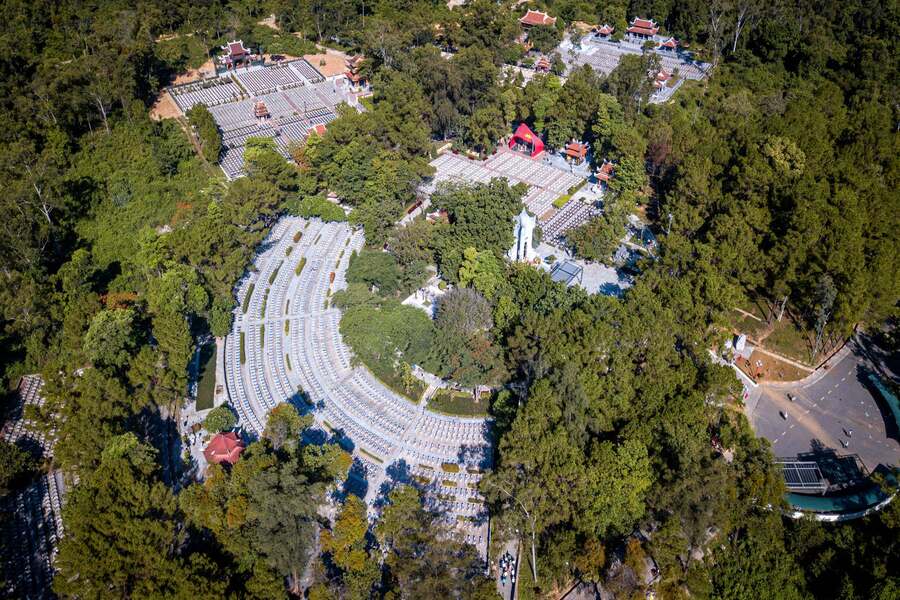
Panoramic view of Truong Son National Military Cemetery. Photo: Nhan Dan Newspapers
The cemetery is divided into 10 zones based on geographic regions so that families and comrades can find their loved ones. Within the cemetery grounds, rows of evergreen trees, a large lake, and a central memorial. Whoever comes here can feel the solemn yet peaceful atmosphere.
The graves are well-built and marked with directional signs. Twenty-one dedicated caretakers ensure the cemetery is always well-maintained. Visitors often leave offerings of flowers, incense, or personal mementos at the soldiers’ graves.
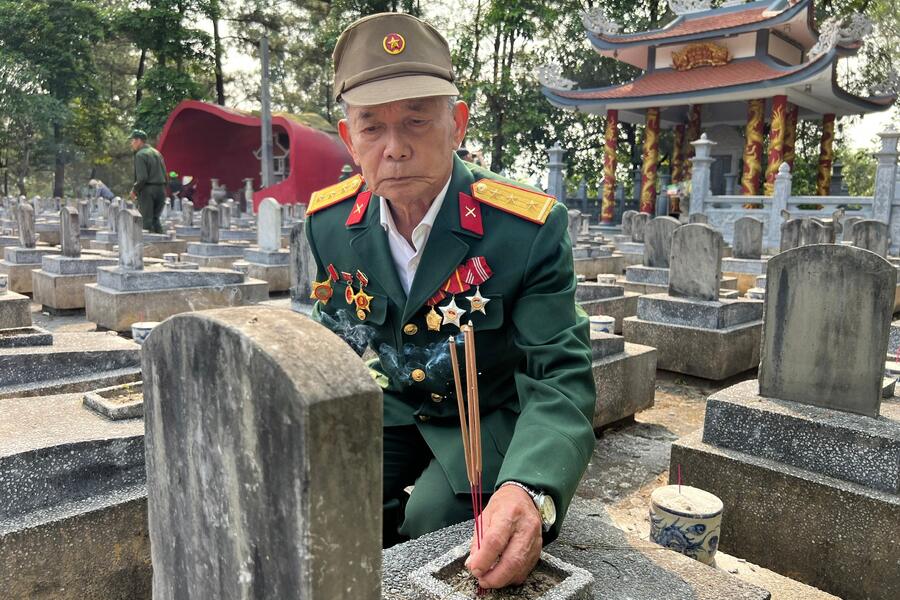
A veteran visits his old comrades. Photo: Binh Thuan Newspaper
A short distance away, the National Cemetery Highway 9 was built on an equivalent scale to honor the martyrs along Highway 9 and neighboring Laos. Highway 9 is also associated with the famous Khe Sanh.
Khe Sanh is a small town in Huong Hoa District, Quang Tri Province. This remote spot was the site of one of the most intense and persistent battles of the Vietnam War, known as the Battle of Khe Sanh.
In late 1967, the North Vietnamese Army surrounded the U.S. Marines at Khe Sanh, cutting off their supply routes. The battle raged on until the siege was finally broken in April 1968. 15,000 American soldiers were unable to return home after the four-month campaign and the subsequent three months.
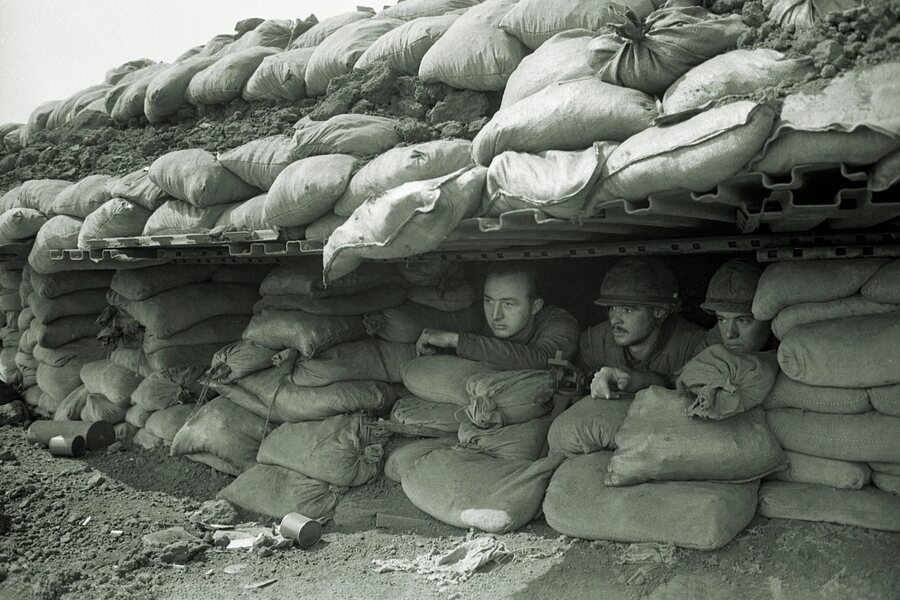
American soldiers under the siege of Khe Sanh. Photo: Rebel Seed Studio
These heavy losses ignited the anti-war movement in the United States, leading to demands for troop withdrawal. Soldiers began to question the morality of the war as they paid a heavy price defending a foreign land.
Today, Khe Sanh is a beautiful mountainous town. Once heavily bombed, National Highway 9 has now been upgraded into a modern trans-Asian highway. Khe Sanh historical site attracts tens of thousands of visitors annually. Khe Sanh Coffee has become a popular brand especially.
.jpg)
A beautiful corner of Khe Sanh today. Photo: Visit Quang Tri
Either Vietnam or the US, they both agreed that Quang Tri is a “meat grinder”. Countless young men in their twenties fell on this land. This was most evident in Quang Tri Citadel in 81 battle days in 1972.
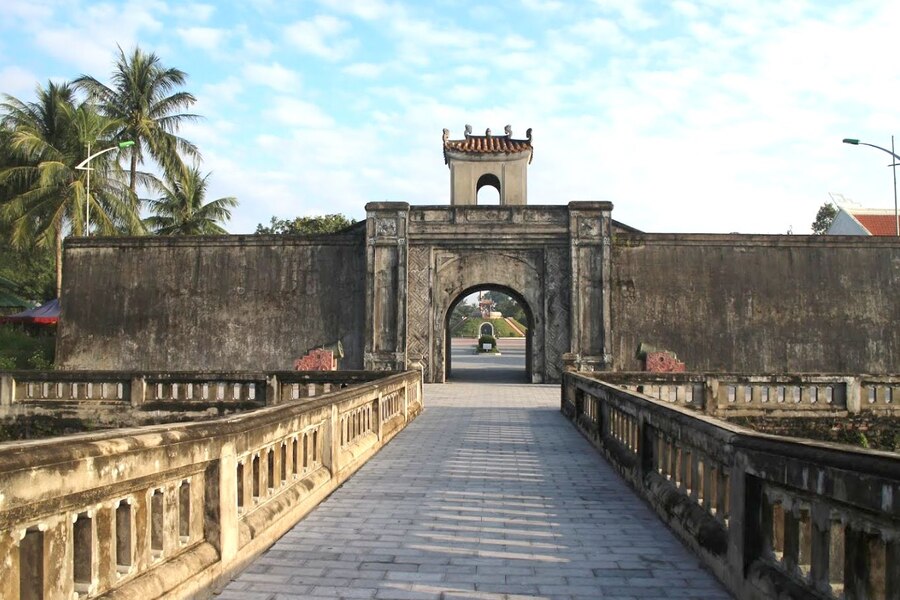
Quang Tri Citadel's entrance gate. Photo: Phong Nha Explorer
Originally constructed in the early 19th century by the Nguyen Dynasty, the citadel was a strategic military outpost. The Second Battle of Quang Tri in 1972 was a battle for control of Quang Tri Citadel. Whoever occupied this area would have a significant advantage in the 1973 Paris Peace Agreements. Therefore, both sides committed all their forces to victory.
The battle raged for every square meter of the citadel. A company entered, only a few would survive the next day. The US army dropped approximately 120,000 tons of bombs, equivalent to the explosive power of 7 atomic bombs dropped on Hiroshima. According to statistics, both sides suffered 12,000 to 15,000 casualties over 81 days.
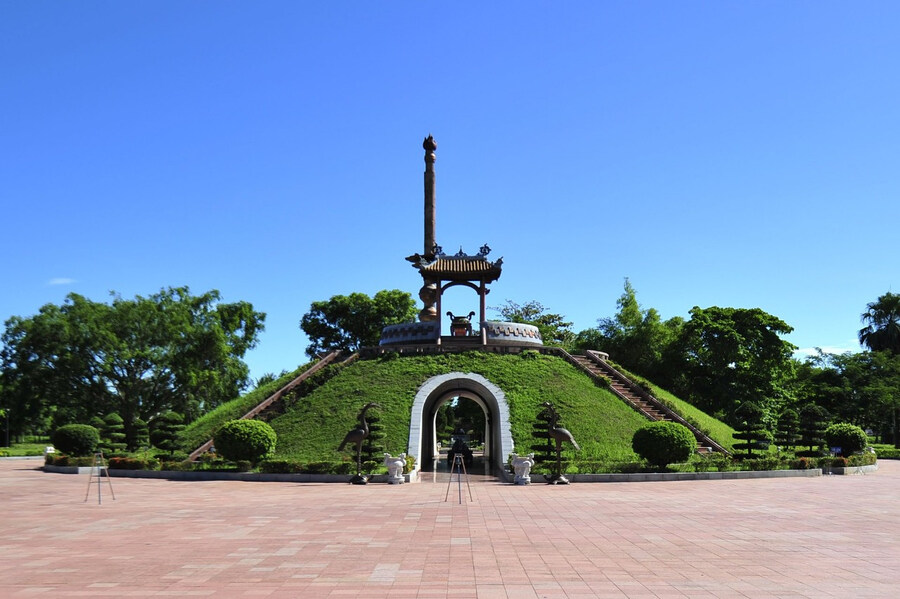
The hill in the center commemorates martyrs in the Battle of Quang Tri Citadel. Photo: Viptrip
Regardless of which side you are on, whether a veteran or young, come to the Quang Tri Citadel to commemorate the soldiers who sacrificed their lives here. Their stories will surely touch your heart.
Dong Loc Junction or Dong Loc T-Junction, is a legendary crossroads in Ha Tinh Province. At the beginning Ho Chi Minh Trail, Dong Loc Junction was a strategic chokepoint. Controlling this junction meant controlling the flow of troops and supplies to the south.

Dong Loc Junction and the memorial site. Photo: Vinh Phuc Newspapers
US Air Forces targeted the route for destruction due to its strategic importance. On the other hand, Vietnamese soldiers worked tirelessly to fill in bomb craters and keep the route open. Many people lost their lives under the barrage of bombs, most impressive is ten young women. They sacrificed while filling the bomb craters.
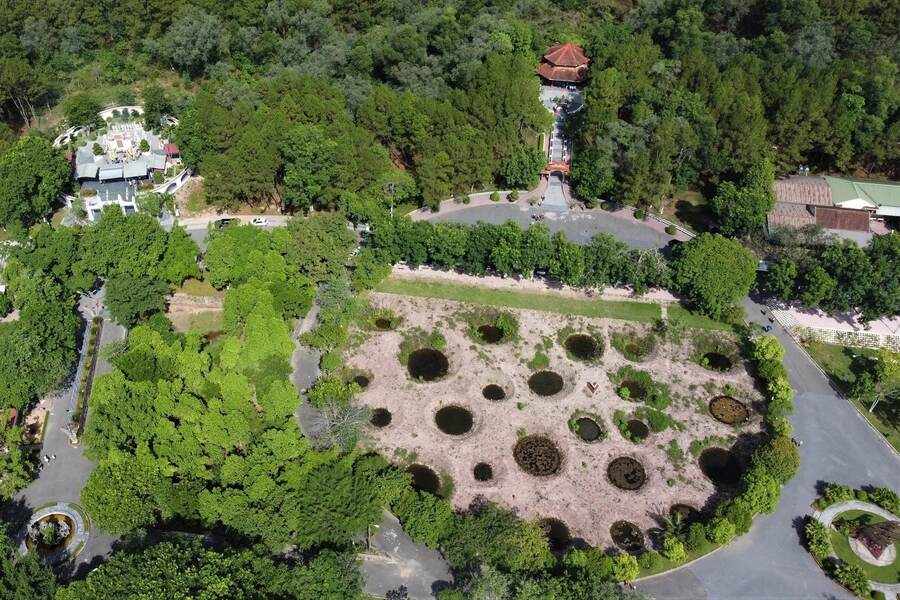
The remaining bomb craters show that this place was once heavily bombed. Photo: Dan tri
Dong Loc Junction Memorial Site welcomes thousands of visitors annually to pay tribute to the young soldiers. The bomb crater where ten young women lost their lives remains. A victory monument has been erected on the site of the former battleground. The statue base depicts bombs, fire, and clouds representing peace and hope.
Beyond the history lessons, these sites are a chance to reflect on the human costs of war and the importance of pursuing peace. When you leave, what is left in your mind is the country’s beauty and even the value of freedom. Contact Asia King Travel to plan your historical trip to Vietnam!
Suggested for you: Vietnam Veteran Tour 11 days: South & Centre of Vietnam War Memory